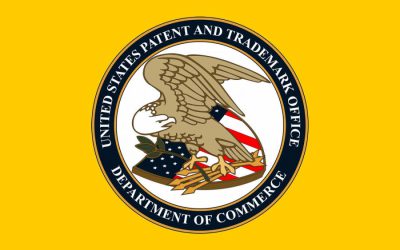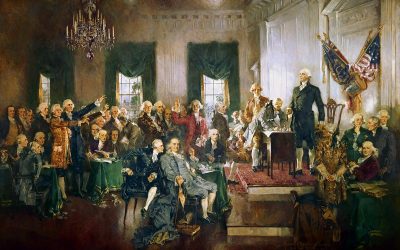Today, patent policy often seems mired in complex legal debates. For instance, the Patent Trial and Appeal Board (created in the America Invents Act of 2011) has led to five Supreme Court cases raising intricate questions and complex disputes in administrative law, the interpretation of statutes, and constitutional law. Longstanding issues in patent law, such as what makes a patented invention nonobvious or how to construe patent claims, seem quaint by comparison.
But these basic legal issues still matter, especially for the inventors, startups, and other companies working in the innovation industries that create and market the technologies that make modern life a veritable miracle by any historical standard. One such pressing legal issue is whether patents owners should receive injunctions to stop ongoing or willful infringement of their property rights. No one doubts that property owners should be secured against a trespasser who deliberately invades a farmer’s field or against a trespasser who repeatedly cuts down a landowner’s trees without permission to sell the lumber. Injunctions in these cases issue presumptively against the wrongdoers. Should owners of patents—property rights in inventions—receive the same protections against violations of their rights?
The Loss of the Key Legal Remedy for Patent Infringement
Until recently, courts answered this question with a resounding yes (as I explained in a recent article). This began to change after the Supreme Court’s 2006 decision in eBay v. MercExchange, in which the Supreme Court created a four-factor test for determining when injunctions should issue as a remedy for ongoing or willful infringement of a valid patent. In the ensuing years, the rates at which injunctions have issued to stop willful or ongoing patent infringement have dropped dramatically.
The reason is that judges and officials became swept up in the “patent troll” narrative and mislead by junk science statistical studies about patent litigation by licensing companies. This policy rhetoric was pushed in the patent policy debates by Big Tech companies, activists, and lawyers. Confused by policy narratives loudly complaining about a “broken patent system” and “abusive patent litigation,” judges departed from historical norms in which patent owners could rely on effective legal security in their property rights in creating and commercializing new innovations. An empirical study from several years ago confirmed a statistically significant decline in issuance of injunctions, and not just for licensing companies. Manufacturers have also felt the sting of increased denials of injunctions for violations of their patent rights.
Why Injunctions Matter for the Innovation Economy
The negative economic impact of this legal development in the loss of injunctive remedies for patent infringement is clear. It is as predictable as if homeowners could no longer evict squatters or could not prevent continuing trespassers or encroachers on their land. If landowners could not protect their rights in these cases, their willingness and ability to develop their property, as well as their ability to sell their property in the marketplace, would be massively undermined. These interferences with their rights—permitted by the courts that are specifically charged with stopping them—would be discounted in any investment or purchase decision.
The same has occurred for inventors and companies working in the U.S. innovation economy. Predatory infringement by large companies with the financial and legal resources to make patent piracy profitable has become commonplace. Patents as an asset class have been devalued; venture capitalists and business partners working in the value chain are less willing to make investments in or pay licenses for uncertain and unenforceable property rights. Studies show that investments are shifting from patent-intensive sectors of the innovation economy, such as in medical devices and in enterprise software, to non-IP-intensive industries, like hotels and restaurants.
Reliable and Effective Patents are a Launching Pad for the U.S. Innovation Economy
As I explained in a recently published article, courts historically secured reliable and effective property rights in innovation. By the end of the 19th century, the U.S. patent system became the “gold standard” throughout the world. Patents spurred the explosive growth in the U.S. economy from the Industrial Revolution in the 19th century to the digital revolution in the 20th century to today’s biotech and mobile revolutions.
The reason is simple: patents secure the fruits of productive labors of the innovators who create the new products and services that drive economic growth, create jobs, and ultimately contribute to a flourishing society. This is what property rights do for everyone—from innovators to farmers. Supreme Court Justice Levi Woodbury succinctly stated this point in a patent case in 1845: “we protect intellectual property, the labors of the mind … as much a man’s own, and as much the fruit of his honest industry, as the wheat he cultivates, or the flocks he rears.”
Justice Woodbury’s comparison of patents to farms was not rhetorical flourish. No farmer would invest a year of one’s life tilling the soil, planting seeds, protecting the crops from the ravages of insects, animals, and weeds, harvesting the crops, and ultimately converting crops into food, such as seed or bread, if the law did not secure exclusively to this farmer the fruits of his productive labors. The same is true for innovators, who spend as much or more time and effort to create the valuable devices and processes necessary for all people to produce and create themselves, including farmers, such as Cyrus McCormick’s patented invention of the mechanized reaper.
This is why U.S. law secures a domain of liberty from interference from others so that people are free to create, use, and trade the products of their labors—the exclusive right we call property.
The Founders who created the Constitution recognized that patents are indeed property, as did the majority of judges, congresspersons, and prominent American legal scholars who implemented the system they created (as detailed here). The Constitution authorizes Congress to enact patent laws to “secure” the “exclusive right” of inventors to their discoveries. James Madison wrote in the Federalist No. 43, in justifying this constitutional power to protect both patents and copyrights, that “The public good fully coincides in both cases with the claims of individuals,” a point the Founders repeatedly recognized about all property rights.
Reliable and effective property rights are a key factor in creating growing innovation economies and flourishing societies. This exclusive protection makes possible the contracts and other commercial dealings that comprise the free market. Historians, political scientists, economists, and other scholars have overwhelmingly recognized that this key economic insight applies as much to property rights in inventions as it does to other goods and services. This is what is at stake in the seemingly esoteric legal debate over whether patent owners should be secured by injunctions against willful and ongoing violations of their property rights.
This article was made available by Save The Inventor – coalition of inventors, patent owners, and stakeholders from a broad range of industries that believe the patent system is critical to a modern economy. Visit their website at savetheinventor.com



